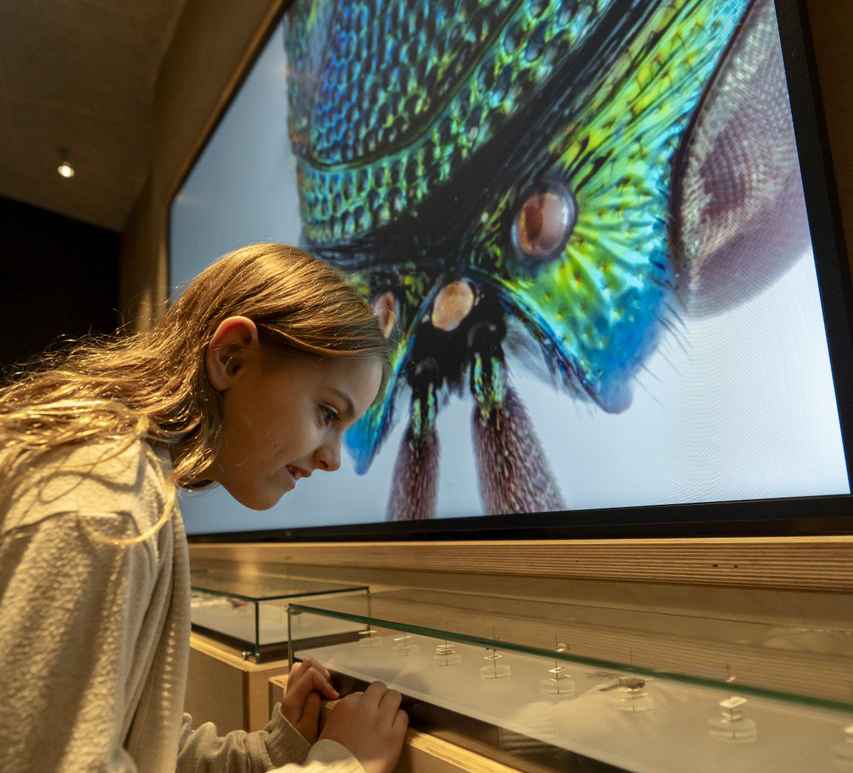Winter is quickly approaching as I finish up my fieldwork down in the Big Muddy Valley. In the past months, I have said goodbye to my two wonderful field assistants from this summer! Ana flew back to Brazil after finishing up her exchange program at the University of Regina and Leagh headed back to Calgary to finish up her studies. I was so incredibly lucky to have them with me this summer. Together we managed to capture 26 bullsnakes and 13 racers. That’s 39 snakes in total!
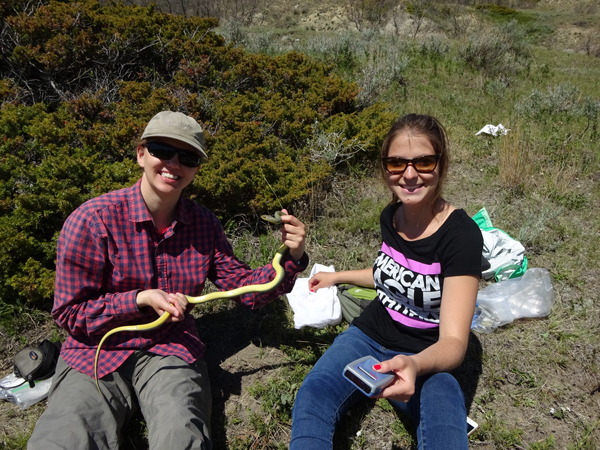
My wonderful field assistants: Leagh and Ana. Here they are processing Drusilla, following her capture.
Right now the field season is coming to a close as I am in the process of tracking our snakes to their hibernaculums. A hibernaculum (or den site) is where the snakes will spend the winter to avoid the cold weather that comes with living up north!. Snakes spend all winter in these hibernacula, which can be a hole in ground, or a rock crevice. Not very much is known about what makes a good hibernaculum, other than it needs to be located below the frost line so that the snakes can avoid the freezing temperatures.
Unlike other animals in the winter, snakes do not ‘hibernate’ per se, but simply reduce their activity levels. On warm winter days, snakes may very well be active near the entrance of the den. Snakes also spend their winters in groups, with other members of their species and even other snake species! That’s right. Our bullsnakes and racers may be spending the winter together, snuggled up in the dens.
The snakes I have been tracking seem to be in the process of heading back to their den sites. As far as I can tell, it looks like some of our snakes will be overwintering in some of the big rock formations found in the Big Muddy or in the sides of hills with burrows aplenty. On the other hand, some of our snakes are still out and about. I am really curious to see where they will end up before winter comes and where the different hibernacula are located. Are the dens near where the snakes spent the summer? I’m excited to find out.
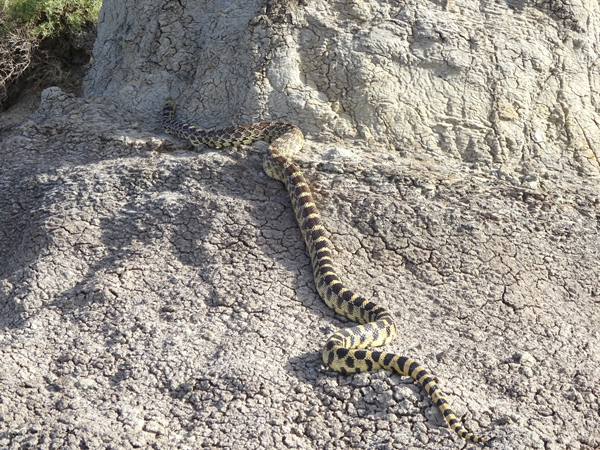
Magenta scaling the base of a rock formation, moving towards a burrow
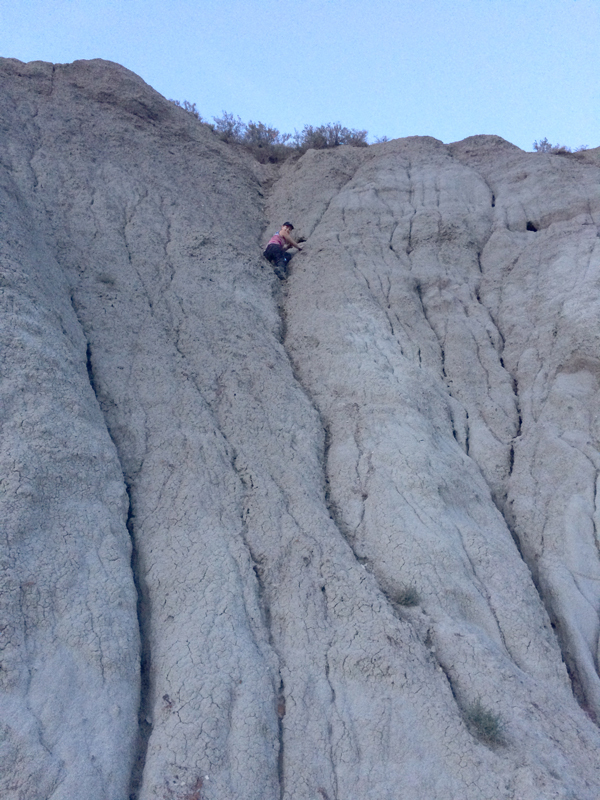
My volunteer, Una, scaling the side of a rock formation to mark a GPS point. Akima (a bullsnake) was in a hole in the side of the rock!
With that I bid you adieu. To end my final blog entry of the 2015 field season I would like to share with you some more lovely photos from this summer. Enjoy!
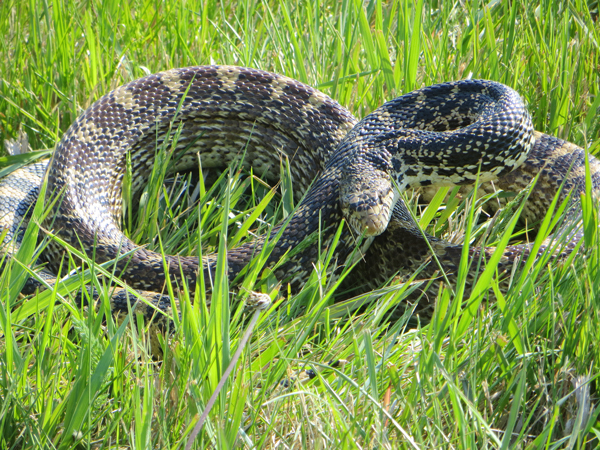
Nagini: the beast of a snake! (photo credit: Leagh Vermeylen)
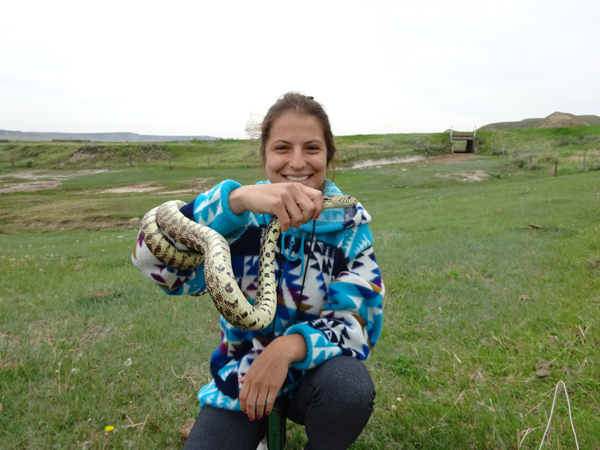
Ana and Mushu prior to his release back into the pasture. He enjoyed coiling himself around our arms.
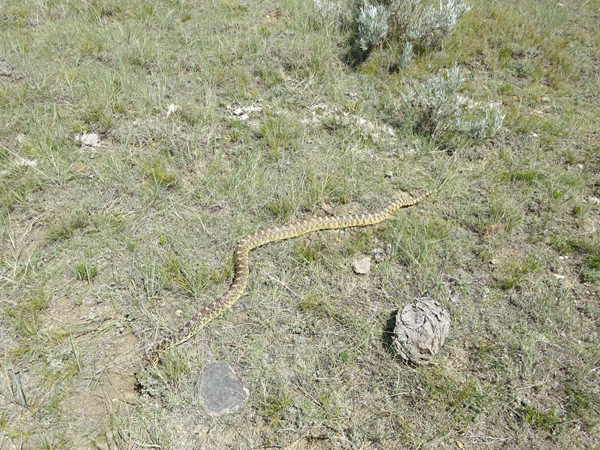
Scully moving down a burrow, following her release.
She was a big girl, being one of our heaviest bullsnakes at 1.56 kg.
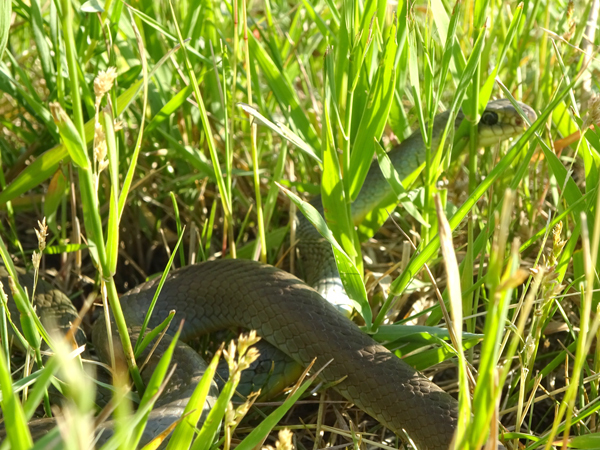
Oz sitting camouflaged in the grass. Racers are very hard to see when they sit still. Their green body and yellow belly helps them to camouflage. Racers are also very hard to catch when they move; they are very fast.

